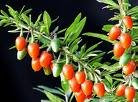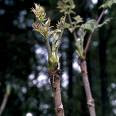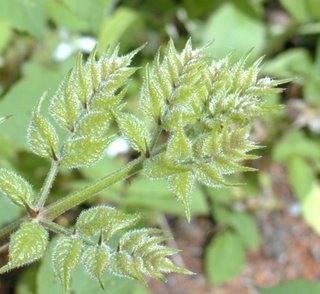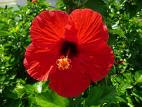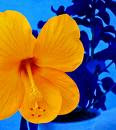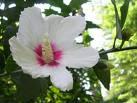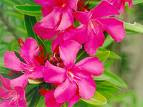[ . BACK to WORLDKIGO TOP . ]
. Legends about Salt .
::::::::::::::::::::::::::::::::::::::::::::::::::::::::::::::::::::::::::::::::::::::::::::::::::::
Salted winter food
***** Location: Japan
***** Season: Winter
***** Category: Humanity
*****************************
Explanation
Salt has been used in Japan as in other countries to prepare food for winter. Especially salted fish is very common.
 salted salmon, shiozake 塩鮭 (しおざけ)
salted salmon, shiozake 塩鮭 (しおざけ)
"new roll" aramaki 新巻(あらまき)
shiobiki 塩引(しおびき)、shiojake しおじゃけ
Salted salmon, called shiozake or shiojake, is so ubiquitous in Japan that when people just talk about “salmon” (sake or shake) they are usually referring to the salted kind rather than the raw kind (which is specifically called namazake(生鮭)). Salted salmon is a staple ingredient of bento, used as an onigiri rice ball filling, flaked on top of or mixed into rice, or just grilled.
Salted salmon is cheap and easily available in Japan, but not so outside of Japan. So I’ve been making it myself for some time now, and it’s quite easy. All you need is a typical refrigerator that has low humidity. (If yours doesn’t have excess condensation in it, and old leafy vegetables get dessicated in the corner of your vegetable bin, then it’s ideal.)
Read how to prepare it :
© justbento.com
salted yellowtail, shioburi 塩鰤 (しおぶり)
salted cod, shiodara 塩鱈 (しおだら)
The Chinese character of this fish (tara
鱈) consists of the word for FISH and SNOW! It is a delicacy in winter.
salted bonito, skipjack, shiogatsuo 塩鰹 (しおがつお )

 hodgepodge with salt, shottsuru nabe
hodgepodge with salt, shottsuru nabe
塩汁鍋 (しょっつるなべ)
"salty soup" shottsuru 塩汁(しょっつる)
saltey soup with fried clams, shottsuru kayaki
塩汁貝焼(しょっつるかやき)
::::::::::::::::::::::::::::::::::::::::::::::::::::::::::::::::::::::::::::::::::::::::::::::::::::
 Echigo Murakami Sake Shiobiki Kaido
Echigo Murakami Sake Shiobiki Kaido
越後村上鮭塩引き街道
The "road for salted salmon" in Murakami, Echigo.
Every home has salmon hanging from the eaves, with the stomach open to the wind (tomebara 止め腹).
The main street of the village is called "Salt-pickled Road".
::::::::::::::::::::::::::::::::::::::::::::::::::::::::::::::::::::::::::::::::::::::::::::::::::::
Shiogama has prospered as the home of the Shiogama Shrine and as a harbour city.
In ancient times a god named
Shiotsuchi no oji no kami, is said to have come to Shiogama and to have taught the people how to make salt. Shiogama, meaning salt caldron, derived its name from this legend.
Today, the ancient salt making ritual is still performed every July at the
Okama Shrine in Shiogama.
Shiogama Myoojin (塩釜明神, 鹽竈明神)
WDK : Sail-cord Festival (hote matsuri). Shiogama
::::::::::::::::::::::::::::::::::::::::::::::::::::::::::::::::::::::::::::::::::::::::::::::::::::
amajio あまじお【甘塩】 "sweet salt"
lightly salted food and pickles
amajio no sakana ... lightly salted fish
::::::::::::::::::::::::::::::::::::::::::::::::::::::::::::::::::::::::::::::::::::::::::::::::::::
The Salt fields at shrine Ise Jingu 伊勢神宮
mishio 御塩 "salt for the gods"
Mishiohama 御塩浜 beach with the salt fields
Mishio yakuiho 御塩焼所
The salt for daily offerings is prepared at the shrine salt fields.
*****************************
Worldwide use
North America
Compiled by Larry Bole :
American cuisine is such a hodge-podge of world cuisines!
Americans who need to look after their health are looking for ways to cut-down on sodium, which there is often too much of in American food.
There isn't much interest in salt pork anymore, but it once showed up in American cooking, especially in Boston baked beans.
http://en.wikipedia.org/wiki/Salt_pork
There are
salted peanuts, but if they were a kigo, they would probably be a summer kigo.
There is
corned beef, which usually goes on sale around St. Patrick's Day here in America.
And there is
salted codfish, which is found in both Italian-American cuisine (baccala) and Hispanic-American cuisine (bacalao).
In my city neighborhood, where there is a substantial Latino population, I love going into the local grocery stores around Christmas time and smelling the briny, tangy sea smell of the bacalao, even through the plastic wrapping.
One of my favorite
Basho haiku:
tsutsuji ikete sono kage ni hidara saku onna
azaleas all arranged:
in their shade, a woman
tearing dried cod
Basho, trans. Barnhill
This has been translated into Spanish as:
Ante un florero lleno de azaleas
Una mujer
Desmenuzando bacalao seco
Basho, trans. not known
::::::::::::::::::::::::::::::::::::::::::::::::::::::::::::::::::::::::::::::::::::::::::::::::::::
Philippines
In the Philippines, we have what is called
"bagoong", pronounced "ba-go-ong", which is anchovy paste. It has a sharp pungent odor and is often used to flavour less sharply-flavoured dishes, but also functions as a kind of counter-flavour for very sour dishes or sharply-sour fruit, like green mangoes. However, a simple dish of bagoong with rice will do very well, too. The bagoong will cause you to eat more rice and thereby fill your tummy, even if you have nothing else to eat in the house, which is often the case with people living below the poverty line. That doesn't mean, though, that only the poor eat bagoong. It's not called our native caviar for nothing! In "tokos" around the world, especially Asian, and most especially Filipino "tokos", fresh export-quality bagoong can be bought by the jar.
 dried fish
dried fish
and salted tomatoes
... on Delft blue!
a saucer
of anchovy paste
on the table
the steady drip
from a leaking roof
Ella Wagenmakers
*****************************
Things found on the way
Salt in used as a means to purify a place in Japanese culture.
Sumo wrestlers throw a hand full of salt in the ring before the battle, to purify it of any negative feelings the arena may hold from past bouts .

After a funeral, visitors get a small package of salt to purify themselves before they return home. O-kiyomejio お清め塩 .
 Morishio (morijio 盛り塩)
Morishio (morijio 盛り塩) - a symbolic mound of salt at the side of the entrance to a Japanese restaurant.


According to the story, there was once a
Chinese emperor who had 3,000 concubines waiting in little houses outside the palace gates. Every night the emperor would set out in an ox cart to visit one or the other of them. One clever concubine, knowing that animals are fond of salt, decided to improve her odds of a royal rendezvous by putting salt outside her door. The imperial ox made a beeline for the salt and couldn't be budged, so, while the emperor may have had a different destination in mind, he ended up spending the night with her.
Morijio ... more details are HERE !
:::::::::::::::::::::::::::::::::::::::::::::::::::::::::::::::::::::::::::::::::::::::::::::::::::::
salt with kurome (seaweed), kuromejio くろめ塩
くろめ(黒海布/黒布/黒菜) クロメ
kurome is a kind of konbu. It is powdered and mixed with salt.
The mixture is eaten with fresh sea-urchin eggs (uni).
salt with seaweed 藻塩 mojio, moshio
eaten with tempura
CLICK here for PHOTOS !
Records of this salt

Prepared first in Yamato by the god 塩推之神.
Ein besonderes „Algen-Salz“ (mojio, moshio 藻塩 ) wird gewonnen durch das Aufgießen von Meerwasser auf Seegras oder Abkochen zusammen mit Meerwasser zur Erhöhung des Mineralgehaltes; es war ursprünglich eine Art Medizin, die wahrscheinlich über Korea ihre Verwendung in Japan fand und bis heute als besondere Würze zu Tempura gereicht wird. Es wird bereits in der Gedichtsammlung „Manyooshuu“ besungen.
Salz vermischt mit Kurome-Seetang (kuromejio くろめ塩) wird als Geschmacksverfeinerung über frische Seeigel gestreut.
. Moshio yaki shinji 藻塩焼神事 Ritual of making Moshio salt .
わくらばに問ふ人あらば須磨の浦に
藻塩たれつつ侘ぶと答へよ
wakuraba ni tou hito araba Suma no Ura ni
moshio taretsutsu wabu to kotae yo
If, by any chance
someone should ask after me,
answer that I pine,
weeping as salt seaweed drips
on the beach of Suma.
Tr. Helen Craig McCullough
Ariwara no Yukihira 在原行平 (818 - 893)
..........................................................................
salt with macha green tea powder 抹茶塩 machajio
eaten with tempura
CLICK here for PHOTOS !
:::::::::::::::::::::::::::::::::::::::::::::::::::::::::::::::::::::::::::::::::::::::::::::::::::::
Salt-tasting Jizo Bosatsu
Shioname Jizo 塩嘗地蔵
This is a small statue in the neighbourhood of Kamakura, where I used to live closeby in the mountains of Juniso.
It is at the foot of the Asahina pass road from Kamakura to the Bay of Tokyo.

This strangely named statue stands within the grounds of Kosokuji Temple. It is enshrined in a small wooden house, together with six smaller Jizo, the Roku Jizo (六地蔵), guardian deities of the Six Realms of the afterlife:
Hell (地獄), Hungry Spirits (餓鬼), Animals (畜生), Bellicose Spirits (阿修羅), Human Beings (人間), and Heaven (天).
In earlier days, the statue stood beside the main road where many people passed by. The name of this Jizo derives from the following story: In the early days, salt sellers offered the Jizo a portion of their salt on their way to the town of Kamakura because they hoped for a successful trade. On their return, they always noticed that the salt was gone. They innocently believed Jizo had graciously tasted it and would give them luck. The legend attests the importance of this road for transportation of daily necessities such as salt.
Look at more photos of the area here:
© Kamakura: History & Historic Sites
quote
Hank Glassman's wonderful book The Face of Jizō (2012, University of Hawaii Press).
Herein we learn that six Jizō effigies were commonly installed at city entrances for "warding off evil and controlling spiritual dirt." (Glassman, p. 129). This accords well with the location of Kōsokuji Temple, which is situated on the outskirts of Kamakura along one of only seven entrance roads. Although Kamakura is next to the ocean, its bay is not well suited for the production of salt. In those bygone centuries, the city depended on salt traders from nearby Mutsu-ura and Mirua for its salt -- and those merchants depended on the passageway in front of Kōsokuji. As a preeminent crossroad deity, Jizō was most appropriately installed here to protect the wellbeing of Kamakura and the prosperity of its neighboring salt traders. The six Jizō icons are not mentioned in the SKS, however, so we may reasonably assume they were added in later years.
and more by
. Mark Schumacher - facebook Jizo Gallery .
. Asaina Kiridoshi Pass 朝夷奈切通し .
and Asahina Saburo Yoshihide - 朝比奈三郎義秀
. 銭塚地蔵尊 Zenizuka Jizo - Shioname Jizo
- かんかん地蔵 Kankan Jizo .
Asakusa, Tokyo
:::::::::::::::::::::::::::::::::::::::::::::::::::::::::::::::::::::::::::::::::::::::::::::::::::::
quote
Agehamashiki Salt Production 揚げ浜式の塩づくり
Agehamashiki (salt production method whereby sea water is brought manually to a salt pond) is a term in salt production corresponding to
irihamashiki (a method utilizing the tide) and is said to be the worlds oldest method of producing salt. In the feudal period, salt production was encouraged as one of the most important products of Kaga Domain and a monopoly was established in 1627.
Not counting one temporary hiatus, the monopoly continued until 1871. In the Suzu area, salt production had been the major industry since the Edo period, but it was terminated in 1959 due to the Extraordinary Measures Law for Salt Industries.
Only Kakuhanake (the preservation society for the agehamashiki salt production in Noto area) has been passing on the traditional technology, despite numerous difficulties.
Beginning with the preparation of the enden (the sandy salt field), and following through the shiokumi (carrying sea water to the enden), which demands extremely hard physical labor, the shiomaki (scattering sea water onto the sand), the construction of the nui (filter), around-the-clock kamadaki (boiling) at the extreme heat of 60 degrees centigrade - the technology for this whole series of tasks can only be found here and is a very valuable cultural heritage.
This activity was designated an Intangible Folk Cultural Property by Ishikawa Prefecture on April 8, 1992.
Look at the video here:
source : bunkashisan.ne.jp
:::::::::::::::::::::::::::::::::::::::::::::::::::::::::::::::::::::::::::::::::::::::::::::::::::::
Tobacco and Salt Museum
Shibuya, Tokyo
The Tobacco and Salt museum might seem a bit of a quirky museum to outsiders but to the Japannese both of these products have been very important in Japanese culture and trade for centuries. This museum traces the history and the importance of both tobacco and salt and its relationship with man.
The third floor is all about salt, its production and uses and its importance to us all. Thre are dioramas and detailed displays which explain salt harvest technologies and the worlds relieance on this natural resource. Japan harvests all of its salt from the sea while many countries expecially in Europe or Asia have natural deposists which they mine. The Japanese are facinated by these salt caves. Some of the displays show the amazing imagination used to create clever salt extraction methods from sea water.
By comparison with other heavily populated parts of the world, Japan has always been at a disadvantage, for it has no known rock-salt deposits or other terrestrial salt sources, while its relatively low median temperatures and heavy rainfall make reliance on natural evaporation impracticable.
Until relatively recent times, importation of salt from abroad was difficult if not impossible, due to the island nation's distance from the continent. Thus, Japan was forced to develop its own salt technology, some aspects of which are not found elswhere.
In general, Japanese salt production was carried on in two stage First, various methods were utilized to produce a heavily condensed saline solution from ordinary sea water; in the second stage, this salt concentrate was boiled down to yield a residue of edible sea salt.
Even with the universal mechanisation in use today, these two processes still form the groundwork of salt manufacture in Japan; the search for increased efficiency in extracting salt from sea water continues to challege the ingenuity of contemporary scientists and technician. The scope of their research is not limited to edible salt production alone, for the growing significance of soda and soda derivatives in modern industry has if anything, increased the importance of salt as one of the indispensable raw materials necessary for the advanced technology of today.
Tobacco and Salt Museum
:::::::::::::::::::::::::::::::::::::::::::::::::::::::::::::::::::::::::::::::::::::::::::::::::::::
Shio no michi 塩の道 The Salt Road
"Chikuni Kaido" 'chikuni kaidoo 千国街道(ちくにかいどう)
From Niigata to Matsumoto in Nagano
:::::::::::::::::::::::::::::::::::::::::::::::::::::::::::::::::::::::::::::::::::::::::::::::::::::
takeshio, takejio 竹塩
salt made in bamboo
bamboo salt. Sea salt is stuffed into freshly cut bamboo and then roasted two or three times. This is an old method from Buddhist monks, brought over from Korea. This salt has a high mineral content and is also used for gargles or as bathing salt. It gives a special flavor to dishes.
. . . CLICK here for Photos !
yamashio, yamajio 山塩
salt from the mountains
from Oshika mura in Nagano 大鹿
It is contained in water coming out from the mountain. It is cooked for a few days until the water is evaporated. Local people use it to eat the tempura, grilled fish in salt and other dishes with it.
. . . CLICK here for Photos !
:::::::::::::::::::::::::::::::::::::::::::::::::::::::::::::::::::::::::::::::::::::::::::::::::::::
 Print by Utagawa Kuniyoshi 風俗女水滸伝
The Salt-boiling Islands, Shiwaku Shotoo
Print by Utagawa Kuniyoshi 風俗女水滸伝
The Salt-boiling Islands, Shiwaku Shotoo (塩飽諸島)
The group is situated between Okayama Prefecture and Kagawa Prefecture in the western Bisan Seto and consists of 28 islands of various sizes. On the Okayama side lie the Kasaoka Islands. The name derives from shioyaku (塩焼く, shioyaku) or shiowaku (潮湧く, shiowaku) both meaning boiling seawater to get salt.
Shamijima 沙弥島
Due to a land reclamation of the Sakaide Bannosu (番の州, Bannosu?) industrial area in December 1967, the island became connected to the adjacent land. Adjoining, the island services the Seto Ohashi Memorial Park. In summer the island is crowded by guests who come to bath in the sea. From the Jomon period on the salt making culture developed. At Nakanda beach (ナカンダ浜, nakanda-hama) earthenware and other finds from that time have been excavated.
The Man'yōshū poet Kakinomoto no Hitomaro paid a visit to the island and composed a tanka and tanka appendage. According to the novelist Nakagawa Yoichi (中河与一, Nakagawa Yoichi?) from Sakaide, Kakinomoto no Hitomaro had a temple/monument erected on Nakanda beach which in 1936 was moved to its present location on Osogoe beach (オソゴエの浜, Osogoe beach?) at (人麻呂岩).
Yoshima 与島,
part of Sakaide and one of the seven "salt boiling islands". area: 1.10 km², circumference: 6.9 km. The island is crossed by the Great Seto Bridge and a rest area ("Yoshima parking area") has been build along the highway.
© More in the WIKIPEDIA !

Utagawa Kuniyoshi,
Women Carrying Buckets of Brine for Salt
source : The Arthur R. Miller Collection
. . . CLICK here for Photos of the Islands !
 source : asahi-net.or.jp
The Shiwaku Odori 塩飽踊り Shiwaku Dance
source : asahi-net.or.jp
The Shiwaku Odori 塩飽踊り Shiwaku Dance
amulet from the Shiwaku Islands (salt boiling).
(on the left)
In 1591, Toyotomi Hideyoshi ordered the marine of Shiwaku to help with his campaign against Korea. 32 ships with 650 people joined the battles and eventually came back sucessfully. When they returned home, old and young, men and women of the island danced for three days, filled with joy.
. Toys and Amulets from Kagawa 香川県 .
.......................................................................
Sakaide and Kume Tsuuken (1780 - 1841)
久米通賢(くめつうけん)坂出

Sakaide is the biggest trading port in Shikoku, dealing with about 34,700 cargo ships and tankers each year. Until the 1960s it was known for the greatest salt production in Japan. Visiting Kamada Kyosai-kai Kyodo Hakubutsu-kan Museum is like visiting Sakaide as it used to be. There are lots of interesting objects from the earliest salt-making pots (300-600 A.D.) to innovations in the 19th century by
Kume Tsuken, the founder of
Sakaide as a Salt City.
Sakaide is an industrial town of 60,000 located 22 km west of Takamatsu. It is a traditional area for sea-salt production.
source : www.lansingsc.org
yukishio, yuki-shio ゆきしお / 雪塩 snow-salt
very fine salt, often used for kaiseki food. This salt is blown over the food to distribute it carefully.
Very rich in minerals, even in the Guiness Books of Records as the salt with the most minerals !
From Miyako Island, Okinawa 宮古島
. . . CLICK here for Photos !
::::::::::::::::::::::::::::::::::::::::::::::::::::::::::::::::::::::::::::::::::::::::::::::::::::
Heda no shio 戸田の塩 salt from Heda, Izu peninsula
It has a long tradition of more than 1000 years.
The salt is boiled and stirred constantly in a long process to make salt. Now a group of local ladies and their husbands keep it up. The men get the water out in large tanks from the deep sea of the Bay of Suruga. From each large yellow container of water they get about 14 kilo of salt.
. . . CLICK here for Photos !
One delicacy is a simple
shio musubi 塩むすび
rice ball with salt
Salt is also used as a dip for sashimi, instead of soy sauce.
:::::::::::::::::::::::::::::::::::::::::::::::::::::::::::::::::::::::::::::::::::::::::::::::::::::
quote
On the night of the twenty-ninth of the sixth month, they met in the garden of the Dajōkan,
drank salt water and swore an oath, . .
This ritual is mentioned only in the edict translated in the article (757.7.12), and in Azumahito's confession in the "Shoku Nihongi" entry for 7.4 to which it refers.
source : pmjs group discussion
::::::::::::::::::::::::::::::::::::::::::::::::::::::::::::::::::::::::::::::::::::::::::::::::::::
 Salt from Ako, called Chushingura
Salt from Ako, called Chushingura
赤穂塩 忠臣蔵
赤穂の天塩
quote
Chûshingura in the 1980s:
Rethinking the Story of the 47 Ronin
Henry D. Smith II
Take, for example, the episode on the Pine Corridor incident that appeared in NHK’s “Invitation to History” (Rekishi e no shôtai) series, in which academic historians, amateur historians, and writers of historical fiction are all happily mixed together to debate a particular issue. One major topic of discussion in this particular program was the so-called “salt-farm theory,” deriving from the fact that both Akô and Kira Yoshinaka’s own domain of Kira-chô, located 40 km southeast of Nagoya on Atsumi Bay, just happened to be producers of salt.
It was the novelist Ozaki Shirô―a native of Kira-chô―who first proposed in 1949 that the incident had its origins in a salt
rivalry between Asano, whose Akô salt was of superior quality, and Kira, who had easier access to the Edo market.
Of the several versions of the salt-farm theory, the most common envisions Kira sending spies to Akô to steal the secrets of superior salt technology, thereby provoking Asano and eventually the Matsu-no-rôka attack. Never mind that there is not a shred of evidence for the theory: the NHK show made a virtue of this by featuring a lengthy discussion by a leading expert of Edo salt production, who conclusively demonstrated that the industrial spy theory was in fact implausible, since the geological and labor conditions in Kira-chô would have made Akô’s techniques useless anyway.
source : www.columbia.edu/
 rusk bisquits with Ako salt 赤穂塩ラスク
rusk bisquits with Ako salt 赤穂塩ラスク
 生大福 daifuku rice cakes with Ako salt
生大福 daifuku rice cakes with Ako salt
忠臣蔵ゆかりの地 赤穂の塩を使った
 salted peanut snack with Ako salt
salted peanut snack with Ako salt
赤穂の天然塩をピーナッツ
only sold in the Kansai area
. Chushingura 忠臣蔵 The Story of the 47 Ronin .
*****************************
HAIKU
SALT kigo for the New Year
Matsumoto no shio-ichi 松本の塩市 (まつもとのしおいち)
salt market in Matsumoto
..... First market at Matsumoto, Matsumoto no hatsu ichi 松本の初市
..... Sweet Market, ame ichi 飴市(あめいち)
Matsumoto in Nagano is the final station of the Salt Road, see below.
It used to be January 11, now on the second Saturday and Sunday in January.
Now more sweets are sold instead of salt.
 . WKD : New Year Ceremonies
Shio no michi 塩の道 The Salt Road
. WKD : New Year Ceremonies
Shio no michi 塩の道 The Salt Road
"Chikuni Kaido" 'chikuni kaidoo 千国街道(ちくにかいどう)
From Niigata to Matsumoto in Nagano
::::::::::::::::::::::::::::::::::::::::::::::::::::::::::::::::::::::::::::::::::::::::::::::::::::
salted salmon
塩鮭をさげて食おうか絵にするか
shiozake o sagete tabeyoo ka e ni suru ka
taking down the salted salmon -
shall we eat it?
shall we paint it?
塩鮭の塩の甘さを嘆くべし
shiozake no shio no amasa o nageku beshi
the sweetness of salt
from the salted salmon -
we should grieve about it
塩鮭や何で紅色きらめきし
塩鮭や海の力を割り裂きて
銀シャリに映える塩鮭見てわが身引き締む
味なじむ鮭のおにぎり母のぬくもり
子がくれし、塩鮭捌く、年の暮れ
© 俳句歳時記(62号)
Tr. Gabi Greve
:::::::::::::::::::::::::::::::::::::::::::::::::::::::::::::::::::::::::::::::::::::::::::::::::::::
木がらしや木の葉にくるむ塩肴
kogarashi ya ki no ha ni kurumu shio sakana
winter wind--
wrapped in tree leaves
a salted fish
Issa, tr. David Lanoue
肴
sakana, can also indicate a bite to go with a sip of ricewine, not necessarily a fish. Something to nibble while drinking.
:::::::::::::::::::::::::::::::::::::::::::::::::::::::::::::::::::::::::::::::::::::::::::::::::::::
Compiled by Larry Bole
In Snorri Sturluson's
"Prose Edda" (Norse Mythology), the sacred cow, Audumbla, "... licked the ice-blocks, which were salty; and the first day that she licked the blocks, there came forth from the blocks in the evening a man's hair; the second day, a man's head; the third day the whole man was there. He is named Boki ['ancestor of the gods and grandfather of Odin']." (trans. Brodeur)
http://en.wikipedia.org/wiki/Salt_lick
Here is a salt lick haiku:
ice moon . . .
an elk touches its tongue
to the salt lick
an'ya
(The Heron's Nest, Volume III, Number 10: December, 2001)
Gandhi led a famous
"salt march" to the seashore in India to protest the British salt tax. This is reminiscent of the American colonial opposition to the British tea tax, symbolized by the "Boston Tea Party."
You can read about Gandhi's "salt march" here:
http://en.wikipedia.org/wiki/Salt_Satyagraha
Various sources on the internet say that Japan has no significant mineral salt deposits, and so has developed several ways, some unique, to extract salt from sea water.
In his book, "Dawn to the West," Donald Keene writes about the Japanese haijin
Sawaki Kin'ichi (1919-2001) and his commitment to writing haiku of social significance.
"A series of haiku describing the salt fields of the Noto Peninsula he [Sawaki] visited in 1955 includes this example:
enden ni hyakunichi sujime tsuketooshi
In the salt fields
One hundred days of raking
Lines in the sand.
"The picture here is of a primitive and infinitely laborious process. Buckets of sea water are repeatedly dumped, all day long, into sand plots exposed to the hot summer sun. The water evaporates, leaving the salt. The sun is hot enough to make this crude method of salt extraction possible only for about one hundred days in the year.
The raking of the sand, generally left to the women, was (like the rest of the process) back-breaking labor. Sawaki's poem, effectively depicting the scene, earned the praise of such men as Mizuhara Shuuoshi and Yamaguchi Seishi for its rare success in incorporating into the poem itself theories of social consciousness often advocated by critics of haiku."
Hugh Bygott has translated the above haiku as follows:
In the salt pan fields,
one hundred days of lines drawn;
marked in the sand.
http://groups.yahoo.com/group/shiki-temp/message/4723
:::::::::::::::::::::::::::::::::::::::::::::::::::::::::::::::::::::::::::::::::::::::::::::::::::::
In the fish shop
the gums of the salt-bream
look cold.
Matsuo Basho
Tr. David Landis Barnhill
:::::::::::::::::::::::::::::::::::::::::::::::::::::::::::::::::::::::::::::::::::::::::::::::::::::
減塩に変えていつもの倍入れる
genen ni kaete itsumo no baai ireru
changing to low salt diet -
usually I add
twice as much
Hensa 偏差値48
*****************************
Related words
Selling new salt, waka shio uri 若塩売(わかしおうり)
celebrating the new salt, waka shio iwai
若塩祝い(わかしおいわい)
kigo for the New Year
.................................................................................
. WASHOKU - sweets with salt ! .
. WASHOKU - Meersalz
Die Geschichte des Salzes in Japan
. Legends about Salt .
*****
Washoku - Food from Japan and Haiku
:::::::::::::::::::::::::::::::::::::::::::::::::::::::::::::::::::::::::::::::::::::::::::::::::::::::::::::::::::::::::::

Sea salt making, the right detail for boiling sea water, in the middle with to women carrying sea water in their buckets, and two men stacking up bundled fuel twigs for heating sea water.
Katsushika Hokusai (1760–1849, signed Zen (Previously) Hokusai Manji 前北斎卍)
Poem by Gonchûnagon Sadaie (Fujiwara no Sadaie,
Fujiwara no Teika), from the series One Hundred Poems Explained by the Nurse (Hyakunin isshu uba ga etoki) 「百人一首宇波か縁説 権中納言定家」, 1835-36
Poem: Konu hito no Matsuo no ura no yûnagi ni yaku ya moshio no mi mo kogaretsutsu
来ぬひとを まつほの浦の 夕なぎに やくやも塩の みもこかれつゝ
On Matsuo Beach
I wait in the pines at dusk
for one who won't come -
and like the blazing salt mounds,
I too am consumed by fire.
- reference : MFA Boston -
:::::::::::::::::::::::::::::::::::::::::::::::::::::::::::::::::::::::::::::::::::::::::::::::::::::::::::::::::::::::::::
[ . BACK to DARUMA MUSEUM TOP . ]
[ . BACK to WORLDKIGO . TOP . ]
- #salz #shio #salt -
:::::::::::::::::::::::::::::::::::::::::::::::::::::::::::::::::::::::::::::::::::::::::::::::::::::::::::::::::::::::::::


